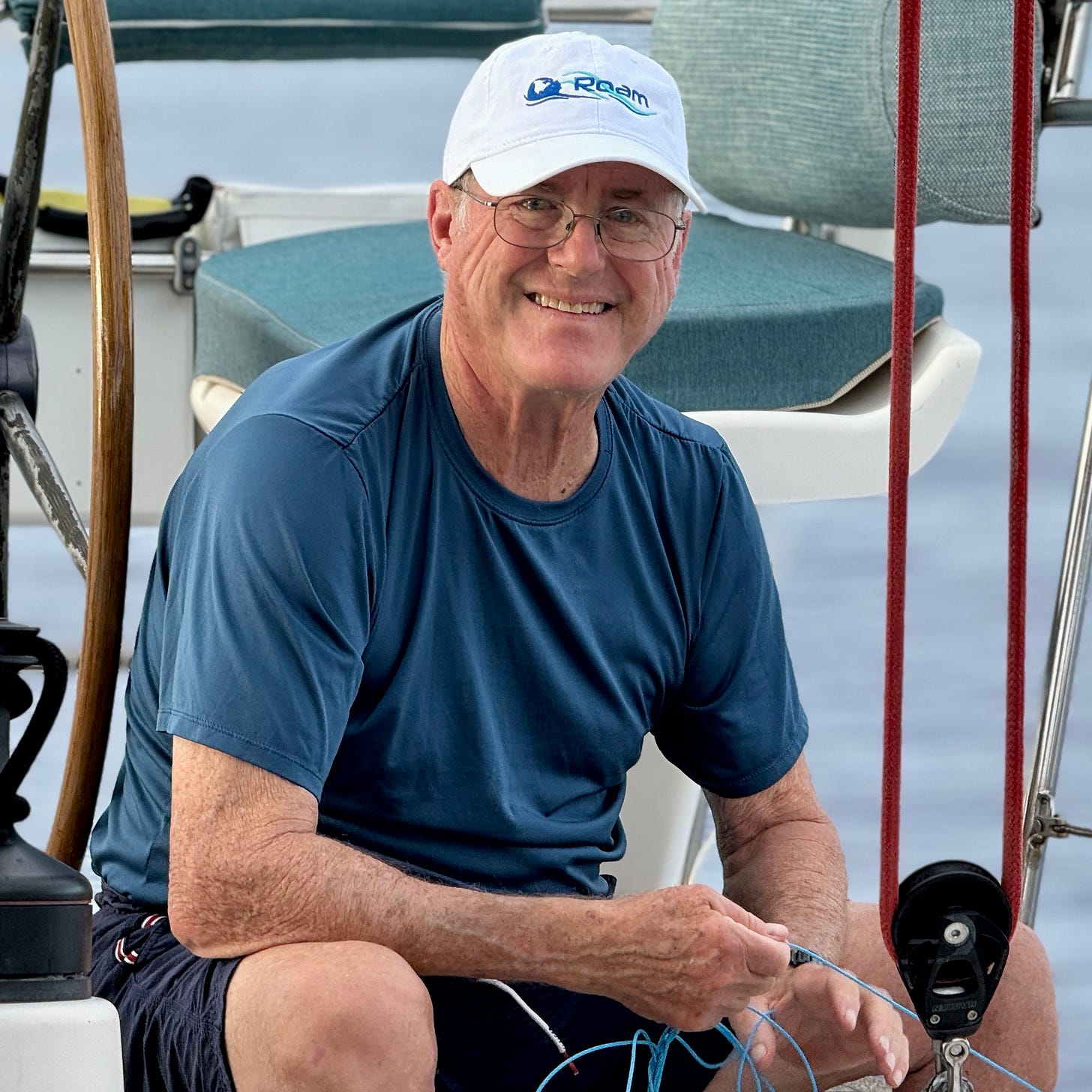Darwin and the Old Man
A Snorkel Through Time and Evolution: Rediscovering Life’s Rhythm in the Coral Reefs of French Polynesia
This is a guest post from our good friend and crewmate, Al Fricke. He sailed with us during January and February 2025 from Tahiti through the Tuamotus.
Al is a forensic psychologist, sailor, writer, octogenarian, and fisherman. We met Al and his wife, Sandy, back in the mid-90s while fitting out for our first Mexico cruise. We’ve been friends ever since.
“How was it?” called Pam as the old man surfaced next to the dinghy. Pulling off his goggles and snorkel, he chuckled: “It’s like a whole city down there,” words that were given to him by his six-year-old grandson, twenty years ago while snorkeling in the Sea of Cortez. The man shook his head, grinning broadly. Here he is, a certified octogenarian, hanging on to a dinghy, spluttering about diving conditions on the west pass of Tahanea Atoll, in the Tuamotu Island chain of French Polynesia. Just days ago, he had been sitting at his desk at home, feeling bored and blank. A text had come from Jim and his wife, Pam. “OK. Let’s go. The weather window is open. Can you get to Tahiti in the next few days?”
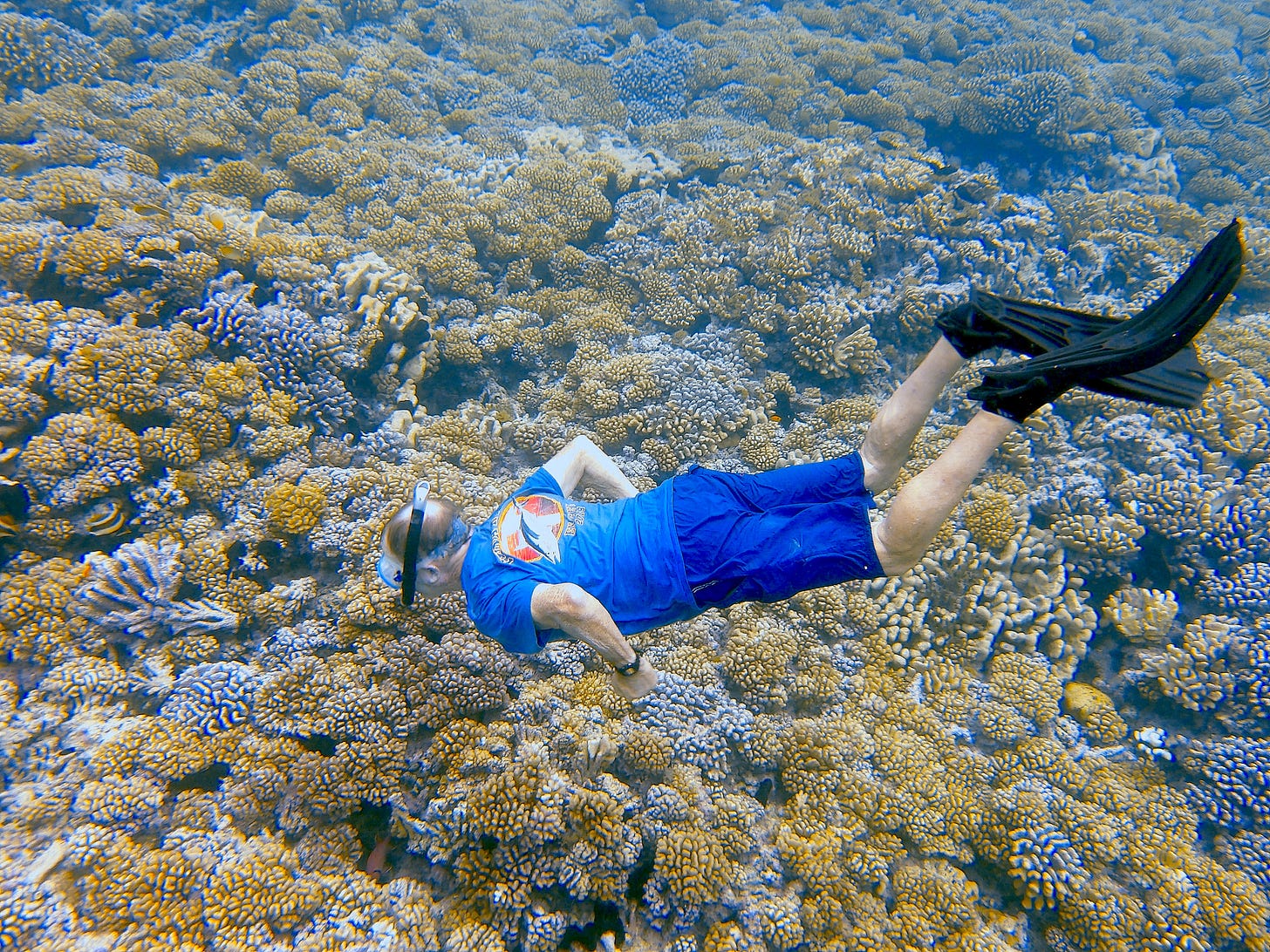
Pam and Jim splash into the 83-degree water next to him, adjust their masks, snorkels, and fins, and the three drift in water as clear as air, giving him a hint of vertigo. In every direction are forests of corals: mauve staghorn, purple and mustard table corals, gray-green cauliflower, lavender boulder, and bright white brain coral, and one he cannot identify that looks exactly like a golf ball. (Later, he discovers this was called “golf ball coral.”) Wild blooms of fish of every variety and color go about their business, darting at intruders to protect their territory, chasing madly after their mates, snapping up morsels of algae or plankton, blending motionless in perfect camouflage with outcroppings, waiting, hoping, lurking, or hiding in deep, dark holes that have mysterious escape tunnels in the back. Some patrolling a single tiny branch of coral, others sliding by large plots of territory. Some working in unison, others solo. Drab and gaudy, mixed together. And the sharks. Big and little black tips cruising and gliding by, with dead man eyes. Sometimes coming back for another look. Smaller ones keeping a longer distance, bolder ones as big as the old man, do not seem worried. As he moves towards one that is coming too close, it sidles away– reassuringly. Intoxicating, this burst of life.
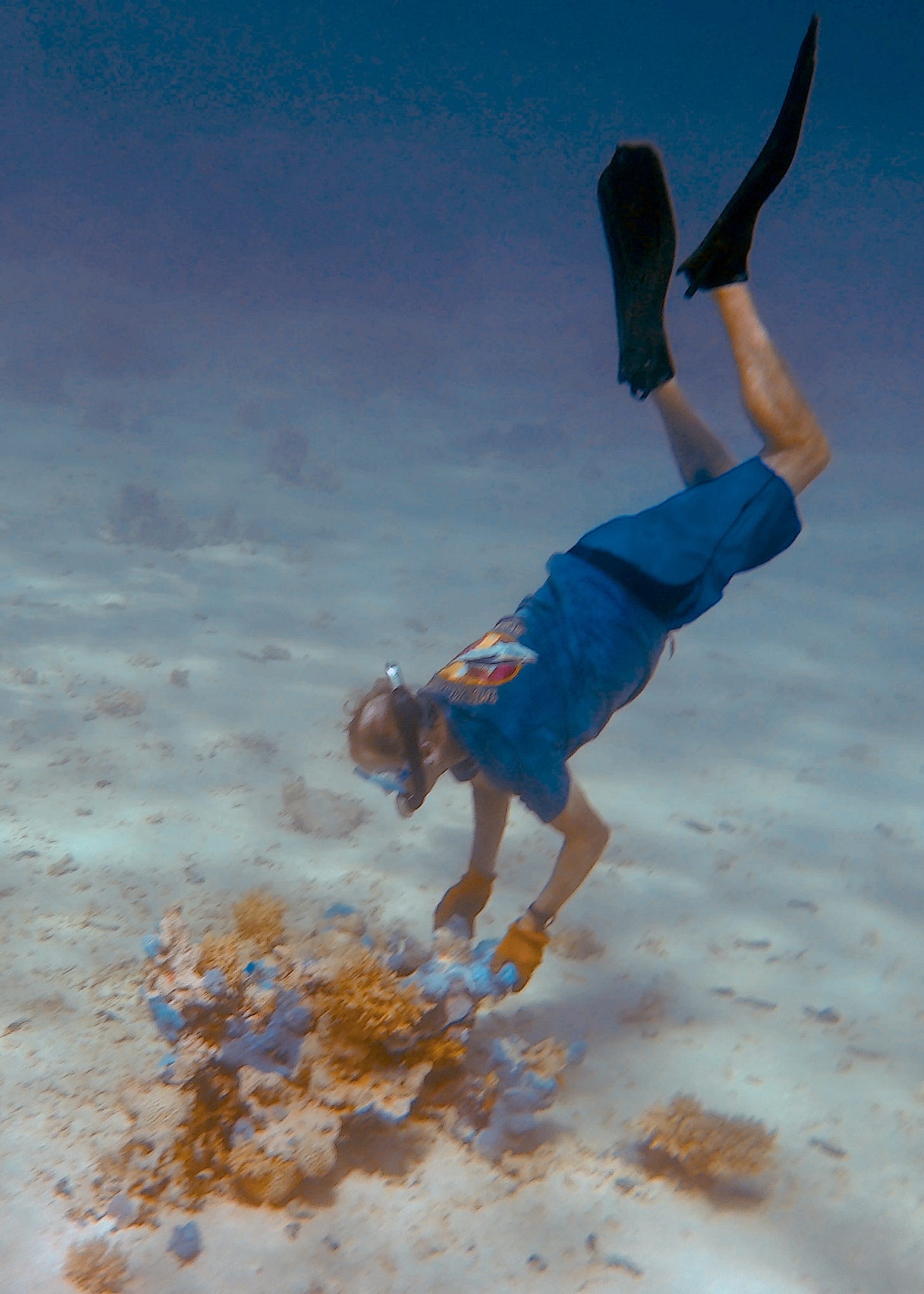
Now the man stops on the surface, gloved hands holding onto a dead coral branch. He stays in one place, looking at the area in front of his mask, snorkel breathing easily, quietly. At first, nothing, just crystal-white spires of coral. Then he spies, winding its way through the branches, a white thumbnail-size sliver, with black stripes, a juvenile damselfish. It gains courage or simply gets desensitized to the huge thing breathing above him. A group of shimmering iridescent blue/green chromis emerges. Mimicking their elders, they begin protecting their areas and grazing on tiny algae and bits floating by. At some point, he realizes that a large, round black spot on the rock is actually the eye of a larger fish, perfectly camouflaged. He thinks each variety of fish has developed a survival strategy that works; otherwise, it would be long gone. He is seeing the same family of fish he observes in the Sea of Cortez, but they have slightly different colors and stripes…why would that be, why did they adapt that way? Perhaps a carefully placed spot here deceives a predator. Maybe a unique group of colors portends poison or not good eating to another. Hiding effortlessly in the protection of waving coral fields or anemones must help another.
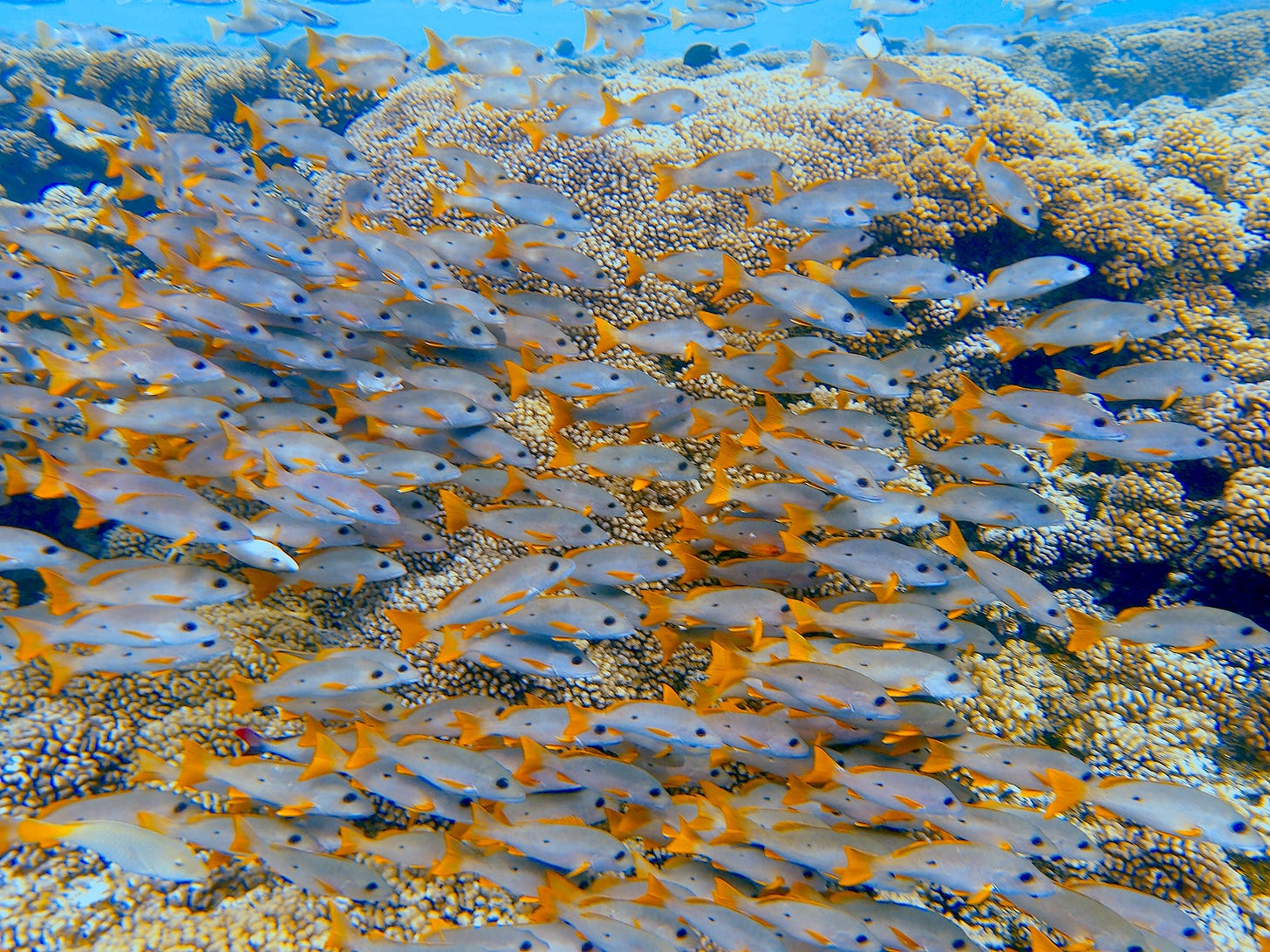
“Having great numbers is effective for sure—you can’t eat all of us. We are such a blur you wouldn’t know where to start.” A mass of hundreds of black-striped convict surgeon fish with flashing yellow hues overtakes some living coral.

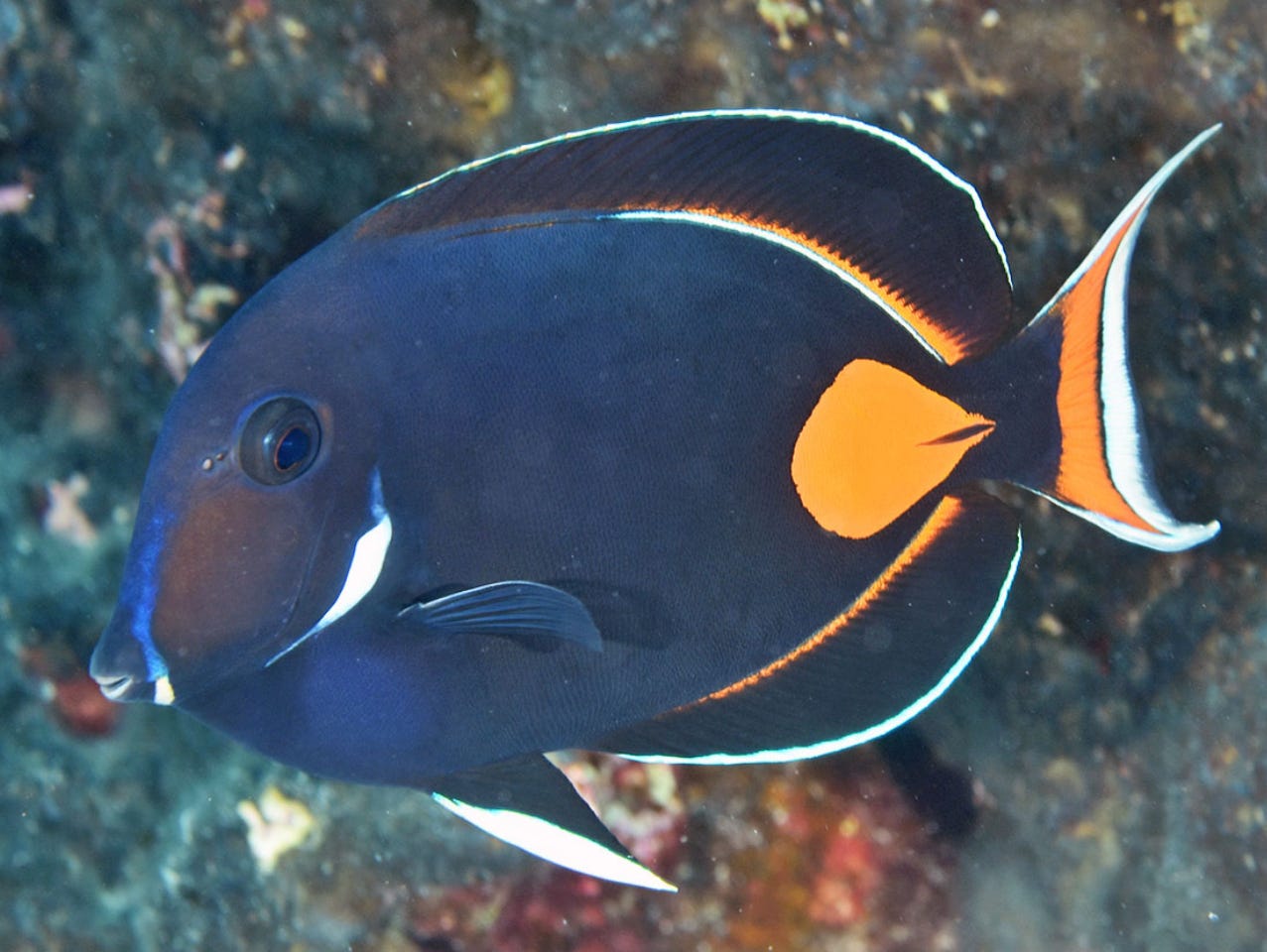
A pair of purple and orange Achilles tangs try hopelessly to fend off their territory. The school is frantically slurping away at the coral, eating in a frenzy, to the point where they surround him, similar to being in the midst of a large, colorful yellow butterfly hatch.
He holds on and waits. A white-tip reef shark comes near, investigating. The diver breathes easily until things begin to emerge, and the scheme starts to make sense.
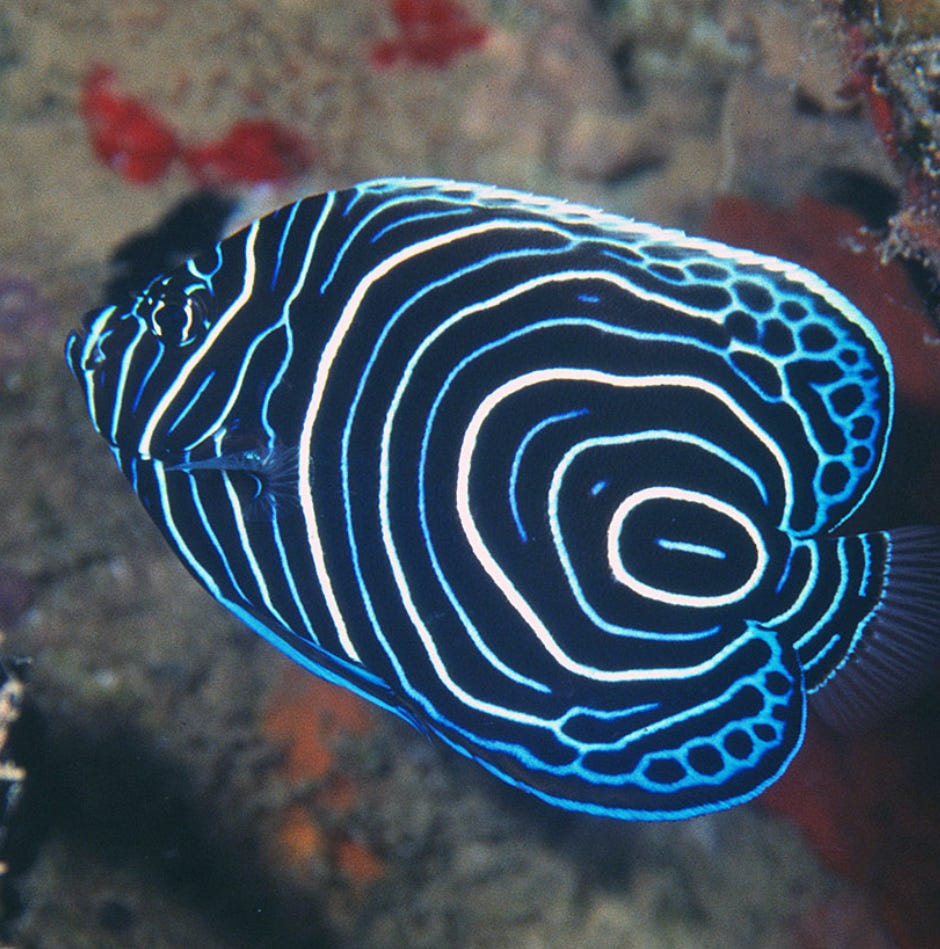
A tiny juvenile emperor angel fish has an array of uneven, wavy, concentric, circular yellow and iridescent blue lines that make the man almost dizzy—he imagines a predator being confused and deciding this might not be lunch. An even closer look at this small, vulnerable creature is that the pattern draws the eye toward the tail, so that a targeting predator might aim too far back as the youngster swims to safety.
It is hard for him to comprehend how most of these families of fish must have formed when the tropical oceans were connected, with each species he is observing slowly changing to adapt to this particular area of the world. They are the same, yet different from the fish he has seen in the Caribbean, the Florida Keys, the Sea of Cortez, the Great Barrier Reef, and the Gulf of Thailand. “Oh my God!” He realizes he’s been looking in one small area for five minutes or so. A large gray spotty hawkfish has been in a crevice, inches from his mask all along, perfectly matching the colors of the reef…not hard to figure out how it has survived out in this wild rhythm of animals devouring anything and everything. Some eat fish, some eat coral, some plankton or algae, some bits of plant, some eat every and anything–but none want to be eaten. He imagines that long-term survivors are the ones who have made slight advantageous adaptations to their exact and distinct little corner of the world.
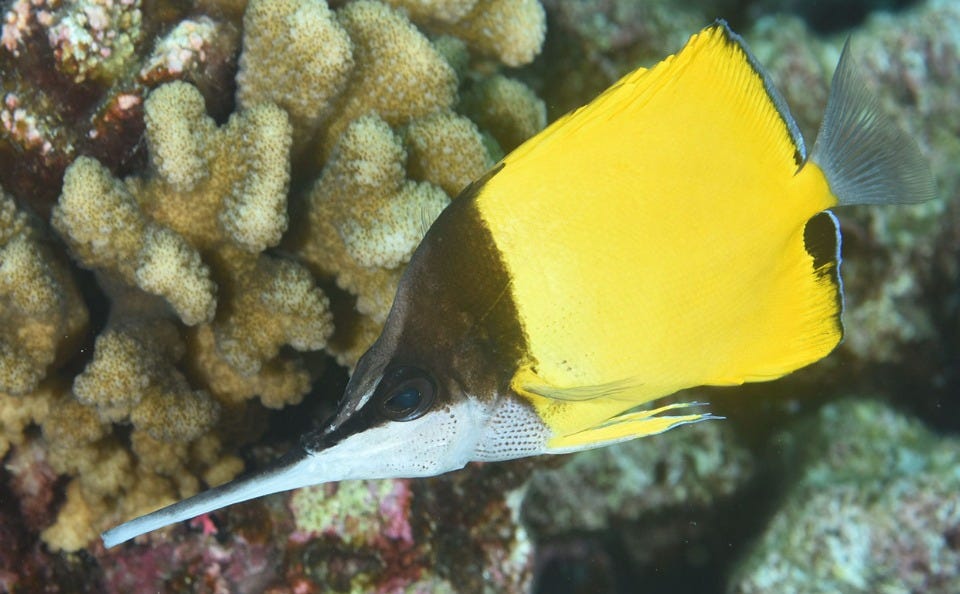
A yellow and black butterflyfish comes between the coral and a waving anemone. Its nose is so much longer than one he had seen poking into a tiny nook for food the day before. After yesterday’s dive, his fish identifier app showed something called a “Longnose Butterflyfish.” He wonders if this might have a different name, and it does: “Big Longnose Butterflyfish.” He visualizes an equation: “Longer nose = access to food other fish reef dwellers do not have = long-term survival.”
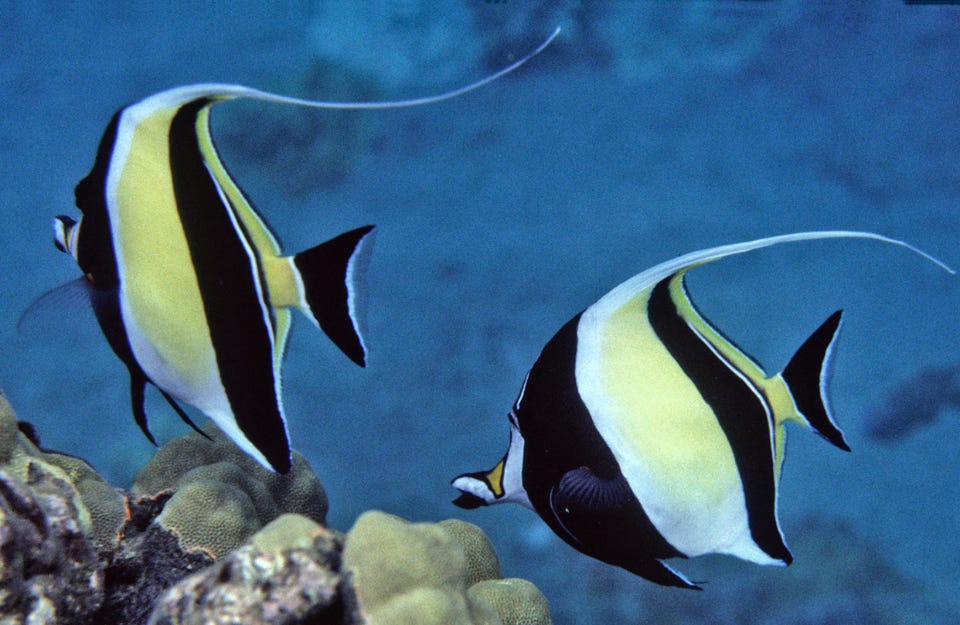
Moorish idols. They seem the same as he’s seen before, flashing black and yellow and white bands with the dorsal fin extended into some kind of soft, wavy whip-like filament, almost as long as its body. What is the function of the wavy, extraordinary fin? Another visual confusion technique? Just showing off? He reminds himself to look up at the surface. All along, bluish half-beak and keel-tail needlefish have been camouflaging themselves in the ruffle; translucent, long, and skinny, easily confused with ripplets.

Back aboard their sailboat, the three sailors bubble with descriptions of what they saw and reflect on their experience. Pam, proud of swimming with sharks despite her instinctual fear, Jim smiling and working on his underwater camera shots, the old man commenting that he likes feeling “normal” in the water, where lack of balance does not plague him.
That night, the old man shines a flashlight in the clear water. At first, nothing, not a thing. Then, right on the edge of visibility, he sees tiny moving brown specs. Zooplankton. Minutes later, tiny sperm-shaped transparent creatures begin showing. Some kind of a copepod. Big eyes, whip tails. After them come larger models of the same thing. Finally, a one-inch neon green torpedo-shaped fish slashes through the brew. More things begin showing up until finally, the three two-foot-long remoras that have adopted the sailboat cannot delay gratification any longer. They slurp through the whole stew, making guzzling sounds. What astounds him is that all this life has been there, in the water, all the time. And each of these plankton, and other life forms, has its own survival mechanisms, adapted to the specific conditions of French Polynesian waters. He recognizes, this day, he has experienced a tiny portion of life’s evolutionary chain in action. For that moment, he is drawn out of his version of an involutional melancholic funk!


